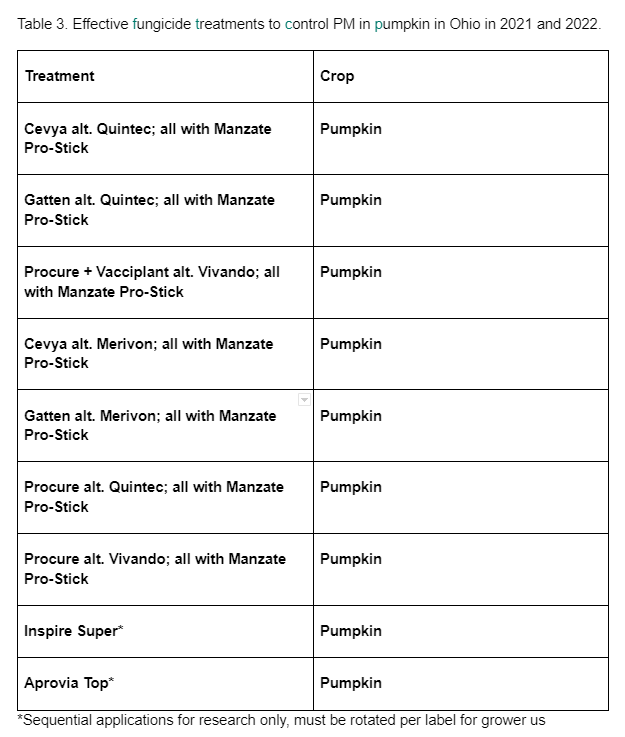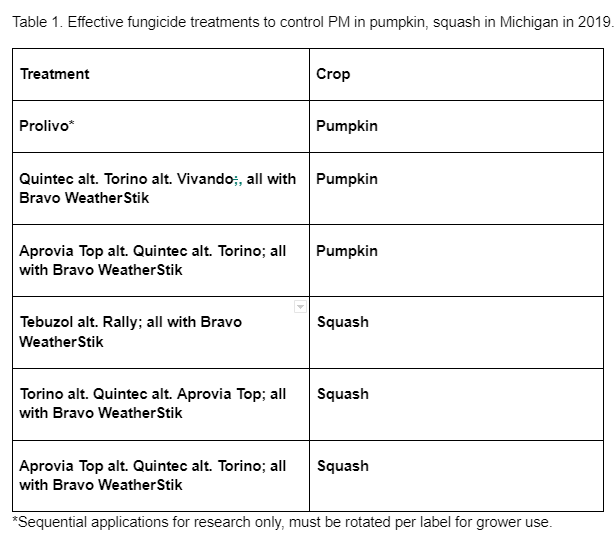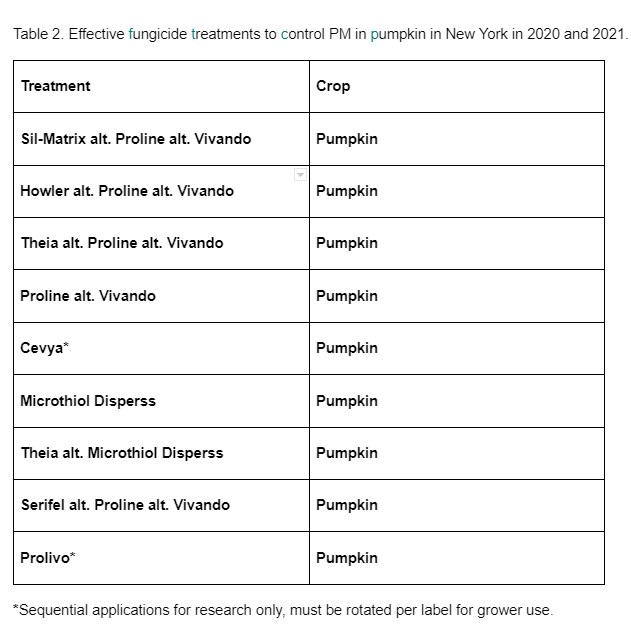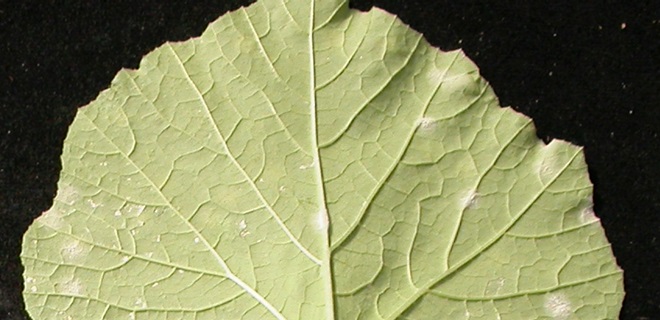

Oct 25, 2023Safeguard and treat pumpkin, squash for powdery mildew
Pumpkin and squash are prominent members of the cucurbit family, along with melon, zucchini and cucumber. According to the 2017 Census of Agriculture, nearly 130,000 acres of pumpkin and squash crops were planted nationally, predominantly in the Midwestern, Mid-Atlantic and Northeastern states.
While foliage and fruit in this family are susceptible to attack from nearly the same insects, weeds and diseases, this article is focused on managing powdery mildew (Podosphaera xanthii) on pumpkin and squash.
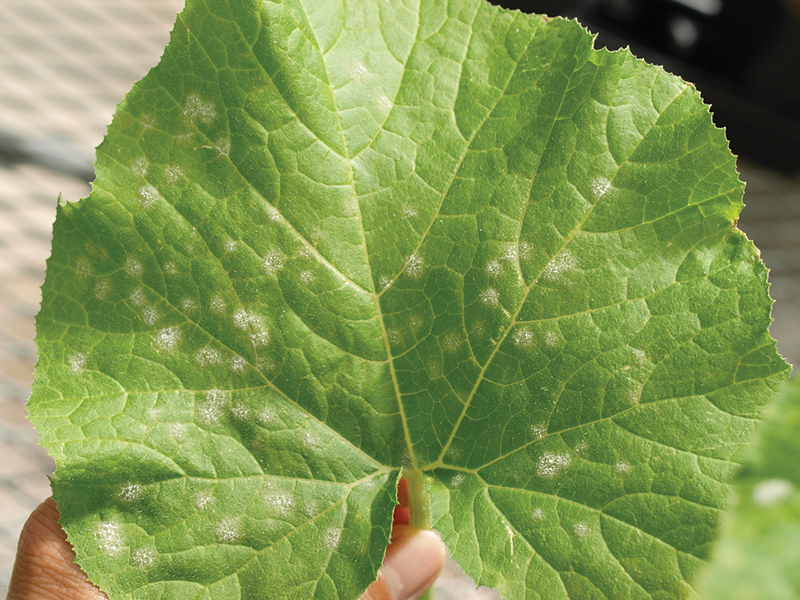

Perhaps no cucurbit disease is more recognizable than powdery mildew (PM), with its characteristic white powdered sugar-like colonies dotting a leaf’s surface around mid-summer. This pathogen doesn’t overwinter in most northern states, but instead infects susceptible crops with conidia generated on cucurbit crops in southern states and is carried northward by wind and weather fronts.
Inevitably, the question becomes: What are the components of a good PM management program?
First, choose PM-tolerant or -resistant hybrids whenever possible to maximize host plant resistance against this disease. Second, scout for PM beginning mid-summer on the upper and lower leaf surfaces throughout the field and leaf canopy. If even a few colonies are found, treatment should begin immediately and continue until harvest. Third, know the Fungicide Resistance Action Code (FRAC) or mode of action (MOA) number (found on the label) for each fungicide used on your farm and how to rotate it.
The general rule is do not use the same FRAC numbered fungicide on sequential applications. This means you should rotate FRAC numbers for each spray. For example, Quintec (FRAC 13) can be rotated with any other non-13 FRAC-coded product, such as Procure (FRAC 3) or Luna Experience (FRAC 3 + 7). The only exception to this rule is the M class products (Bravo, Manzate, Sulfur, etc.) can be applied back to back as protectant fungicides.
While a majority of fungicides on the market are locally or fully systemic in some manner, take advantage of hollow cone or twin flat fan nozzles to maximize product efficacy by delivering droplets to both the upper and lower leaf surface. Other general guidelines include 35-50 gallons per acre with at least 60 PSI to penetrate the deep plant canopy and increase leaf coverage.
Plant pathologists throughout the Midwest, Mid-Atlantic and Northeast conduct annual or biennial fungicide efficacy trials on pumpkin and squash to determine which compounds and spray programs to recommend. Results from a few recent state trials are highlighted below to show the breadth of this work. While individual trial protocols vary, these are field-based trials sprayed and rated for 4-8 weeks to see if significant differences in infestation between treated and untreated leaves can be observed (Tables 1-3).
The bottom line is state and regional vegetable production guides list a tremendous number of recommended fungicides to treat PM, but only a subset can be evaluated each season. Over time, populations of PM within a region can become insensitive to fungicides, requiring growers to be prepared to rotate novel products into their spray programs when significant loss of efficacy is reported.The goal of a good PM program is to maintain healthy foliage long enough to maximize fruit size and quality through harvest.
Thanks to D. Higgins, C. Engfehr, M. Hausbeck, B. Cortright, N. Lukasko, M. McGrath, C. Downing, S. Miller, A. Taylor, J. Amrhein for information in published Plant Disease Management Reports.
— James Jasinski, Ohio State University Department of Extension
Tables 1-3
